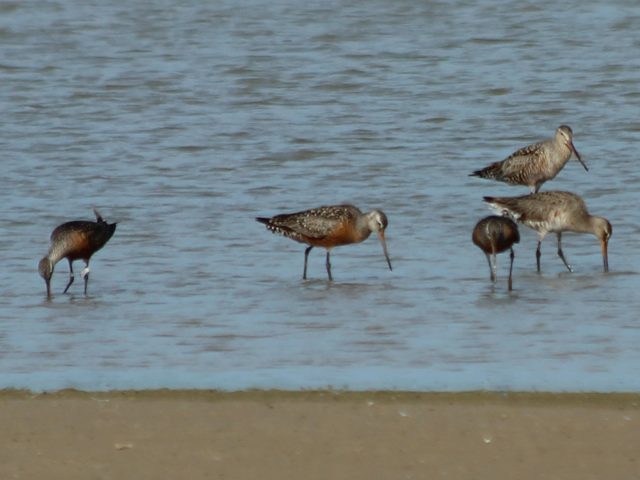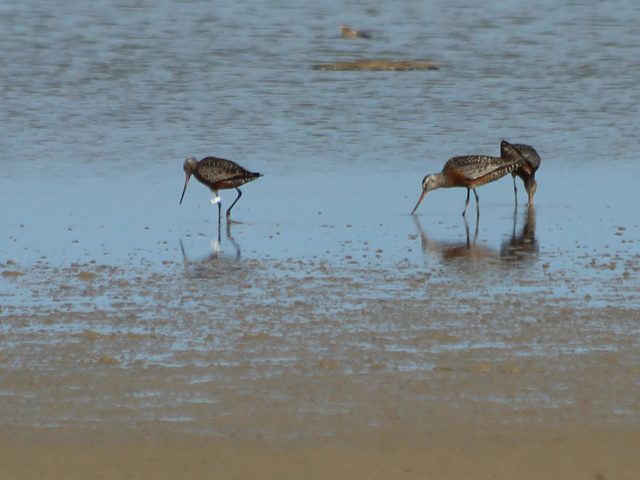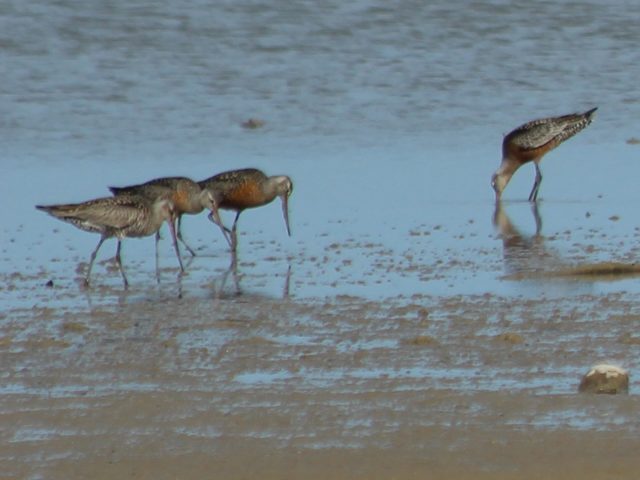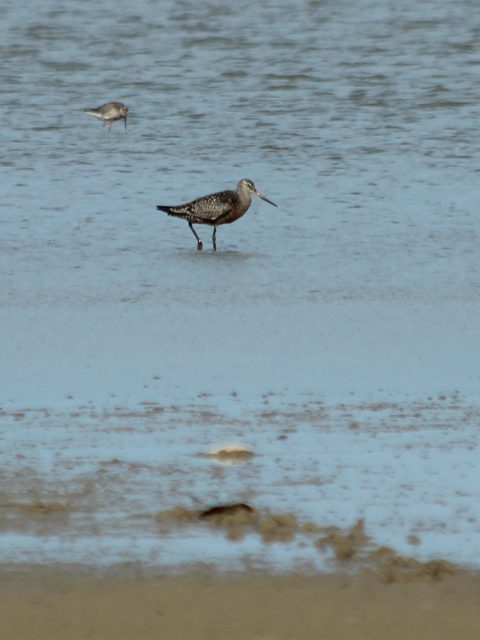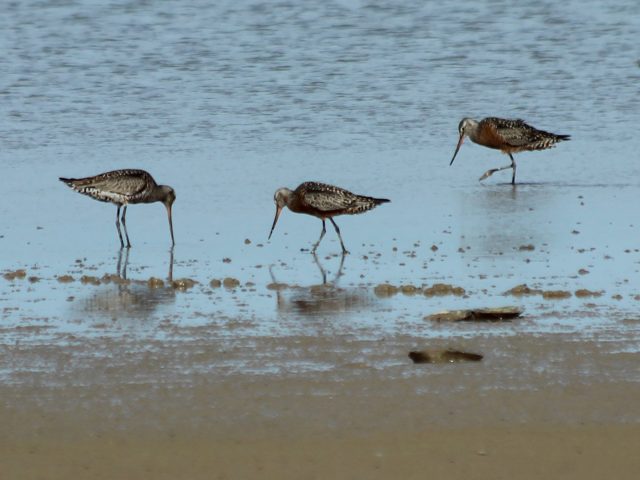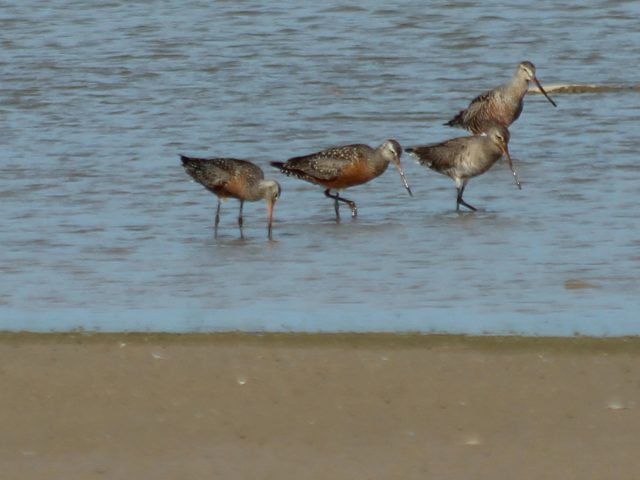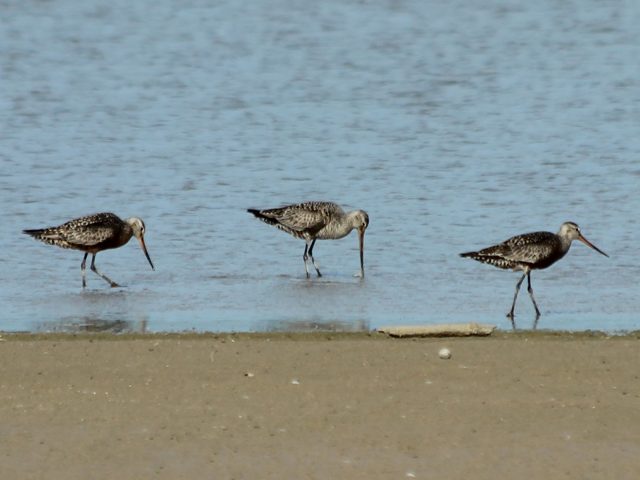May 2013 – Lake Ray Hubbard
These pictures were taken back in May of 2013. I snapped these shots as kind of an afterthought–I was busy working another project at the time, and that effort had the bulk of my focus. These medium-sized wading birds did strike me as being slightly unusual, however, so I took a couple of pictures, and then quickly returned to my primary objective. I had intended to use these photos to work the ID as soon as I got home that evening. Instead, I filed the pictures away and promptly forgot about them.
Recently, and just by chance, I stumbled across the photos again–the first time I had seen them in years. This time I DID do the identification homework, and I was pleased to discover that these are Hudsonian Godwits–a migratory bird that can only be viewed in the metroplex during a narrow window of time in the spring. I have not seen them before or since.
So glad I took a second look at these pictures!
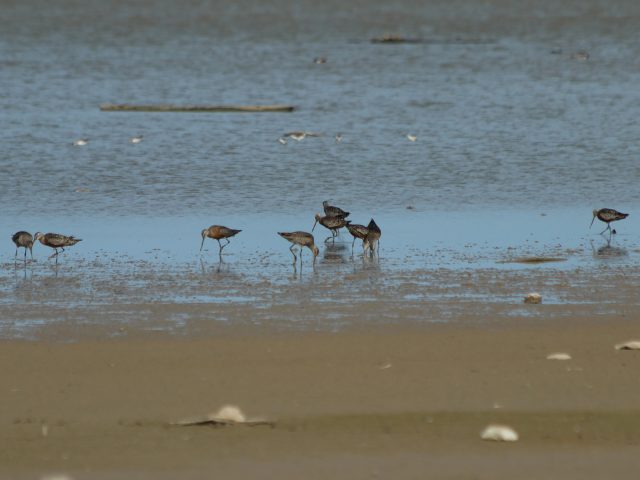
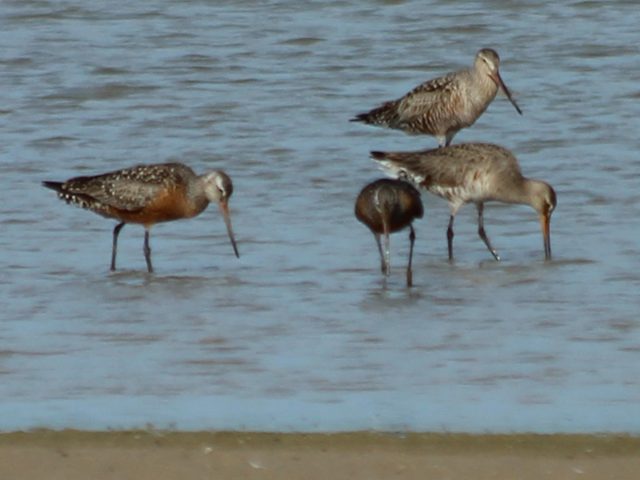

This how Wikipedia describes the Hudsonian Godwit…
The Hudsonian godwit (Limosa haemastica) is a large shorebird in the sandpiper family, Scolopacidae. The genus name Limosa is from Latin and means “muddy”, from limus, “mud”. The specific haemastica is from Ancient Greek and means “bloody”. An 18th century name for this bird was red-breasted godwit. The English term “godwit” was first recorded in about 1416–7 and is believed to imitate the bird’s call
Adults have long dark legs and a long pink bill with a slight upward curve and dark at the tip. The upper parts are mottled brown and the underparts are chestnut. The tail is black and the rump is white. They show black wing linings in flight. The legs and feet are bluish-grey.
Their breeding habitat is the far north near the tree line in northwestern Canada and Alaska, also on the shores of Hudson Bay. They nest on the ground, in a well-concealed location in a marshy area. The female usually lays 4 olive-buff eggs marked with darker splotches. Incubation period is 22 days. Both parents look after the young birds, who find their own food and are able to fly within a month of hatching.
These birds forage by probing in shallow water. They mainly eat insects and crustaceans.
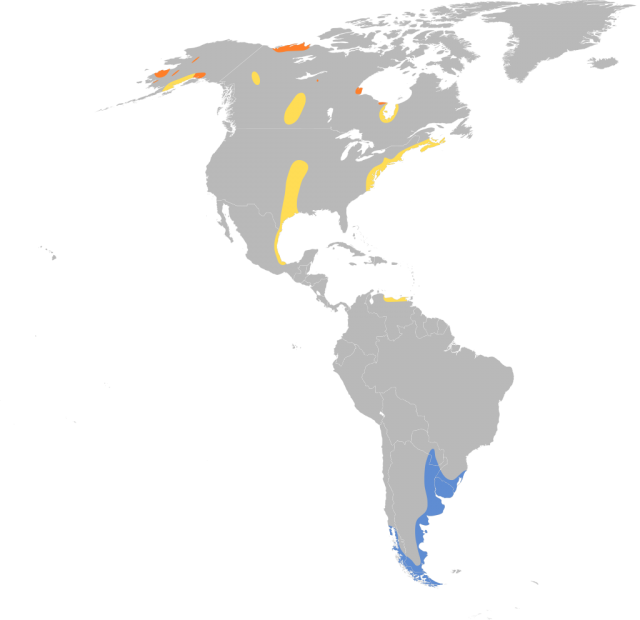
Orange – Breeding, Yellow – Migration, Blue – Nonbreeding


